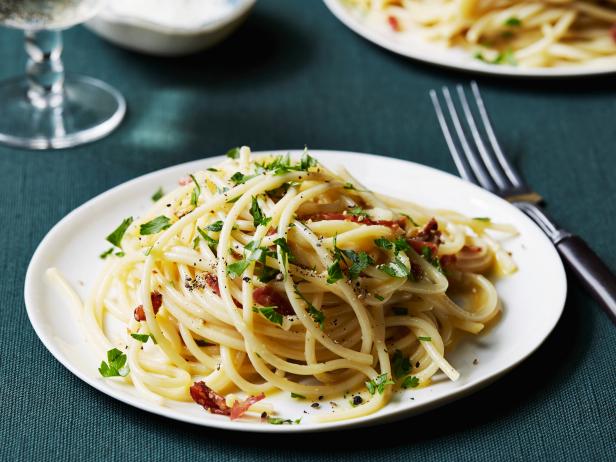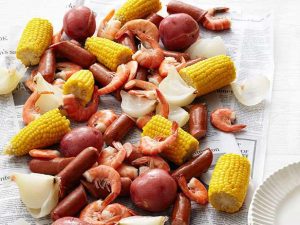Jenna Grace Cooper
Dr. Li & Dr. Ristaino
CHN375W
29 June 2018
Fad Diets: A Study on Pasta in America
Pasta is the universally accepted staple in nearly every diet in the developed world, eaten by the rich and the poor, vegetarians and carnivores, and children and adults. Yet, its diverse and customizable nature allow the pasta to span cultures, continents, and language. From ancient Italy when Marco Polo rediscovered the noodle from China to the expansive rows of dried boxed pasta found on the grocery shelf today, the noodle plays an integral role in the American, Chinese and Italian diets. The noodle transcends time and adapts to new current environments with new technology. These innovations coincide with health, economic, and social trends which give way to new patterns of eating as society advances. With the growing obesity public health crisis and resulting health food movement in the United States, Americans look towards fad diets as a quick solution to their problems which severely alters the American agricultural and economic landscape in addition to detrimental effects on personal health effects. According to the University of Pittsburg Schools of Health Sciences, a fad diet can be characterized as:
a diet that is promising quick weight loss through what is usually an unhealthy and unbalanced diet, targeting people who want to lose weight quickly without exercises, and restricting certain foods. This can make [fad diets] difficult to follow on a long-term basis and some can actually be harmful to one’s health (“Fad Diets”).
These trendy fad diets lack the necessary nutrients that are vital to have well-balanced meals and proper nutrition. Compared to other cultures such as the Italy’s Mediterranean Diet and the traditional Chinese/Asian diet, America’s population of health is waning. This paper will look at both the situation leading to the fad diets that effect the pasta industry among various economic backgrounds and global cultures and the social outcomes that result from consumption.
While one might assume that Americans’ obsession with fad diets would stem directly from vanity and consumer culture, the origins of fad diets date back to the practices of Olympic athletes of ancient Mediterranean city of Athens, Greece (Applegate, 869S). The Greek Olympians practiced a symbolic form of dietary restrictions including consuming deer liver and lion heart before competition to impart bravery, speed or strength to improve their performance (Applegate, 869S). Following the creation of exercise science in the early twentieth century, fad diets became more popular for their science-based practices like carb loading, taking ergogenic aids, or excessive caffeine consumption (Applegate, 869S). In the past, fad diets have focused on the rapid improvement of performance of athletes, usually only during young ages for a short period of time, similar to a training regimen. However, as the American epidemic of obesity has grown, fad diets have taken a turn towards rapid weight loss, often at unrealistic goals.
Fad diets promote limited diets that are not sustainable for the long term. The Atkins diet preaches an “ad-libitum consumption of fatty meat, butter, and other high-fat dairy products, restricting only the intake of carbohydrates to under 30 grams a day” (Astrup, 897). The Zone diet encourages every meal to be comprised of four percent carbohydrates, thirty percent protein, and thirty percent fat to reach the “zone” which is a physiological state that can be measured in clinical tests” (Cheuvront, 1). More recently, the Gluten-Free diet, used to treat patients with Celiac disease, has become a widespread phenomenon across America among nearly twenty million non-celiac consumers (Nettleton). The Paleo diet encourages only foods “similar to what might have been eaten during the Paleolithic era, which dates from approximately 2.5 million to ten thousand years ago” (Mayo Clinic). This diet consists of lean meats, fish, fruits, vegetables, nuts and seeds, only those that could be found by hunter-gatherers. Among many other variations, these fad diets focus on low consumption of carbohydrates, offering a faster metabolism, speedy weight loss without an indication on long term effects, which has caused both the social and economic environment surrounding food to shift.
The State of Pasta
According to the National Pasta Association, the average American consumes approximately twenty pounds of pasta annually, making it the sixth highest food per capital in the country (National Pasta Association). Pasta has adapted to every shape, size, or flavoring that a consumer could desire. It is widely available at any supermarket with rows of boxes dominating shelves in dried or frozen varieties at a very affordable price. In a recent study conducted by Harris Interactive, researchers found that fifty-nine percent of American adults eat noodles or pasta in a meal at least once a week (Daniels).
While the origins of pasta are often linked to the Italian merchant, Marco Polo, and his travels on the Silk Road to China during the thirteenth century, historical evidence s of pasta have been linked to Etruscan tombs from the early fourth century BCE (Vita, ix). The popularity of pasta grew during the Renaissance as the dish would sit among aristocrats and incorporate pork and beef ingredients to make raviolis (López). By the late seventeenth century, pasta became a mainstay among the peasantry and commoners of Italy with its cheap wheat prices, compared to the increasing meat cost, the creation of an industrial manufacturing which made is more economical to produce, and its role as a filling alternative for when eating meat was banned in the Christian communities (López). As pasta spread across the world, it made its way to America during colonization.
Similar to the Italians’ affection towards pasta, the English expats came to enjoy pasta regularly, particularly among the upper class, some even importing from Italy (Kummer). The first pasta factory in America is credited to Frenchman, Antoine Zerega who set up shop on the Brooklyn waterfront in New York in 1848 (“History”). However, by the time of the Civil War, pasta factories were widespread, and macaroni and cheese became an American dish. This lead to pasta falling out of fashion, and it was no longer served at upscale restaurants (Kummer). Pasta, as many Americans know it today, as a staple of the middle class emerged after the large wave of Italian immigration during the end of the nineteenth century (Kummer). America’s grocery store consumer culture began to heat up after Chef Boyardee launched canned pasta in 1928, and Kraft Macaroni and Cheese started selling in 1937 (Kummer). These commercially available pastas became some of America’s favorites and indispensable among the middle-class market, due to its long shelf life as dried or canned food, slow-releasing carbohydrates and its price accessibility.
Today, pasta innovations have expanded to reach every market condition. Fad diets have inspired healthful alternatives to regular white pasta produced by the top pasta companies such as Barilla with variations such as gluten-free dried pasta boxes, Zoodles, spiralized zucchini in the shape of spaghetti noodles, vegetable-infused orange and green pasta, protein-enriched pasta, cellophane noodles made of mung bean, and spaghetti-like tendrils from summer squashes. These types of pastas and substitutes are available at large supermarket chains such as Walmart, Publix, Kroger, and Whole Foods at a few dollars for multiple servings. Despite variety available, according to Mintel, overall pasta sales have continued to decline since 2011 due to the growing health concerns (Daniels).
The Health Condition
The condition of Americans regarding physical health has declined in the recent years with obesity, diabetes, and heart diseases as the leading ailments of consumer health, leading many to look to fad diets and new regimens. In 1992, the United States Department of Agriculture published the first American Food Guide Pyramid which emphasizes foods from five major food groups to provide the nutrients needed to each day (USDA). The guide included six to eleven servings of grain, two to four servings of fruit, three to five servings of vegetables, two to three servings of meat, two to three servings of milk and dairy products, and fats, oils and sweets to be used sparingly (USDA). While other less,-detailed food guides were published prior to the Food Guide Pyramid, the marketing campaign for the new version increased popularity along with the implementation of the Nutrition Labeling and Education Act in 1990 (Office of Regulatory Affairs, FDA). The Food Guide Pyramid was updated in 2005 to include “physical activity and the concepts of variety, moderation, and proportion,” and it was later replaced by MyPlate, a visual representation of proportions of healthy eating, “not intended to provide a specific message” (Welsh, 6-11).
These guidelines have often caused public confusion due to the variety of diets and conflicting reports of what is “best.” However, the Mediterranean diet, followed by most Italians, and the Asian diet food pyramid, followed by most Chinese, along with the American food pyramid, all agree that including plenty of grain products, vegetables, and fruits with physical activity, moderate consumption of alcohol, and limited sugar are practices of a healthy lifestyle (Center of Nutritional Policy and Promotion). In addition to differences in diet based on availability of agricultural products, cultural practices are often incorporated into the historical eating patterns. For example, compared to American diet, red meat is occasionally recommended monthly for Asian and Mediterranean diets with eggs and poultry as the primary protein sources, the Asian diet contains limited dairy products in mostly low-fat forms, and oils are devoted to regional differences with olive oil for Mediterranean, peanut oil for the Asian, and vegetable oils for Americans (Center of Nutritional Policy and Promotion).
While these various pyramids spanning the world’s cultural and medicinal differences, it is clear that pasta as a grain, is beneficial to the diet in reasonable quantities on a low-glycemic index food. In a recent study published by St. Michael’s Hospital, a group of thirty randomized controlled trials including over two thousand five hundred people at three servings of past a week instead of other carbohydrate. Research found that participants lost approximately one and a half kilograms over a median follow-up of twelve weeks, concluding that “pasta does not have an adverse effect on body weight outcomes when it is consumed as a part of healthy dietary pattern” (Chiavaroli). The study was published in April of 2018 and received low coverage in the national media—the more popular narrative, sometimes called “carbophobia,” a reference to America’s apparent fear of carbohydrates, continues to affect the economic outcomes of pasta in the United States.
The Economic Condition
The future economic outlook of the pasta industry widely depends on the consumer behavior and public perception in the upcoming years. As discussed, pasta is an affordable meal for nearly all economic classes, yet it seen as a simplistic dish commonly associated with lower social status. Economic studies on pasta indicate the divide on social classes and income levels. Barilla is the largest pasta company in the world with $3.5 billion in sales (Sorvino). In a relatively localized industry, Barilla holds ten percent of the worldwide sales of pasta and thirty percent in the dry pasta market. Consumer insights for the Barilla indicate that when consumers purchase Barilla pasta over other brands, they pay primarily with food stamps with the pricing index of 122, secondarily with credit at index of 105, in cash at index of 103, and with debit at an index of 90 (“Barilla”). This indicates that the groups of consumers who purchase Barilla pasta over other brands, use the opposite forms of payments. Food stamps are limited to the type of ingredients bought at the grocery store and require a low income, whereas those who pay with credit typically have no limitations on types of food to purchase, must be in good standing with a bank, are typically employed with a disposable income. This represents the divide among pasta with the reason attributing to the strong influence of fad diets.
To increase market share, Barilla has invested $26.5 million to expand its pasta plants with two gluten-free options which now make up two percent of its volume sold in the US market (Sorvino). According to Euromonitor, global sales of gluten-free pasta increase eighty-nine percent since 2016, and Forbes projects this growth to expand by forty-three percent by 2020 (Sorvino). This investment directly resulted in the change in consumer index measurements which indicate that pasta-eaters who make over $100,000 annually are at a 105 index and over $125,000 at index of 120 compared to the index of 88 for less than $20,000 annual salary and 91 for consumers who make less than $40,000 annually of those who purchase Barilla over other brands (“Barilla”). The company’s efforts to be inclusive and incorporate fad diets has led to the increasing purchase by upper-class consumers while still maintaining affordability for lower income communities.
An additional hurdle that can be placed on lower income people is the access to proper nutrition regarding the toppings of the pasta sauce. According to the US Census data and Simmons National Consumer Survey, 265.38 million Americans use spaghetti / pasta sauce in 2017 which is projected to increase to 274.48 billion by 2020 (“U.S.: Usage of Spaghetti”). Because pasta acts like a canvas for many other complementary nutrients, pasta can be cooked with additional vegetables, oils, and meats to meet the standards of the American Food Guide Pyramid and the Mediterranean diet. However, for lower income people, it can be a challenged to find affordable, fresh food to top their pasta. These pre-made sauces are a quick and simple addition to the similarly affordable bowl of pasta, but the nutrition can compromise the benefits of eating pasta. Many pre-made tomato and cream-based sauces are packed with high levels of sodium, salt and preservatives (“U.S.: Usage”). In places such as food deserts where a grocery store is unavailable, or a limited spending amount like on Food Stamps, the appeal of pasta is more focused on the slow-burning carbohydrates which create a sense of fullness, rather than nutritional benefits or culinary prowess. These economic conditions presented by food inequality present numerous social hurdles among the different classes as well.
The Social Condition
It is no secret that food can make one happier. According to a study completed by the University of South Alabama, carbohydrates cause a significant effect on mood with both cravings and consumption. The study found that “carbohydrate cravers reported feeling distress prior to their cravings and satisfied, happy, and relaxed following carbohydrate consumption,” and “protein cravers reported feeling anxious or hungry prior to their cravings and happy, normal, bored, and energetic following protein-rich food consumption” (Christensen, 36). These cravings were primarily directed at sweet and sugar-rich foods such as chocolates at twenty-five percent, pasta at thirteen percent, and lower percentages of candy, ice cream, bread and pizza (Christensen, 139). Therefore, giving up pasta for a restrictive, low-carb fad diet can cause unwanted craving which can trigger mood swings, anger, and even depression.
Yet, the social condition of being on a diet is a change in mood itself. Some fad diets have become received cult followings on social media and within younger generations such as the vegan and organic dietary changes. While in the past, restrictive diets have been socially contested as “avoidance of foods because of food intolerance is associated with alternative and unconventional lifestyles, fashion, and trends,” and “being considered a ‘fussy eater’ [was] socially problematic” (Nettleton, 297). Especially among women, fad diets can become a secret guilty pleasure. As Town & Country Magazine, one of the premier publications for women, put it: among the high society/ upper class women and their cohorts, the belief is held that:
it has always been true that you can have your soufflé Furstenberg and eat it, too, just as long as you observe strict rules in private, exercise moderation, and are blessed with good genes. If pressed, though, they’ll lower their voices and dish about what those other girls are doing to stay thin (Widdicombe).
For many women, fad diets are like a new fashion trend: something to show off and to brag about to anyone who will listen. When coupled with social media, fad diets can become a toxic stressor to the participants due its air-brush tools, photoshop, likes and the nature of self-promotion.
A Pew Research project found that thirty-one percent of teens get health, dieting or physical fitness information from the internet, especially among teenage girls (Lenhart, 4). In a similar survey, the National Osteoporosis Society released a study that found four in ten people aged eighteen to twenty-five have tried dieting, twenty percent had to cut their calorie intake of dairy, and the group was most likely to receive their nutritional information from social media (Sherman). With the rise of eating disorders among young men and women, it can be difficult for people to decipher what is actually “a truly holistic, healthy approach versus the obsession with comparing and weight-focused discussions” said Claire Mysko, director of the National Eating Disorder Association to Elle magazine (Sherman). The online environment can affect any members of social classes and prevent people from receiving appropriate nutrients. Fad diets will continue, but proper qualifications on social media are necessary to prevent the spread of misinformation.
Though it may be contested now, trends occur in cycles. There is a rise of innovators, early adopters and early majority, then the late majority and the laggards who eventually catch on. While some of the fad diets trends such as the gluten-free diet, ketogenic diet, and vegan diet have become a mainstay among Americans, the agricultural industry will adapt to the health, economic, and social changes. Pasta is a diverse connector among social classes, economic backgrounds and cultural diversity. Though its health benefits may come to question at times, pasta can be incorporated in proper proportions in a healthy meal plan full of complex carbohydrates, and it can be paired with a variety of nutritious sauces that created a well-balanced diet. The noodle plays an integral role in the American diet and has influenced people, companies and recipes to change. Economic conditions of which demand for pasta declined was adapted with the creation of new pasta innovations. As these pasta innovations and fad diets spread across social media and reach adaptation, patterns of eating are adjusted, and the new versions of American culinary landscape is created.
Works Cited
Applegate, Elizabeth, and Grivetti, Louis. “Search for the Competitive Edge: A History of Dietary Fads and Supplements.” The Journal of Nutrition, Volume 127, Issue 5, 1 May 1997, pp. 869S–873S, https://doi.org/10.1093/jn/127.5.869S
Astrup, Arne, et al. “Atkins and Other Low-Carbohydrate Diets: Hoax or an Effective Tool for Weight Loss?” The Lancet, vol. 364, no. 9437, 2004, pp. 897–899., doi:10.1016/s0140-6736(04)16986-9.
“Barilla Consumer Insights and Demographics.” Infoscout.co, www.infoscout.co/brand/barilla.
Center of Nutritional Policy and Promotion. “Nutritional Insights: Are All Food Pyramids Equal?” Insights 2. April 1997. Pp. 1-2.
Cheuvront, Samuel N. “The Zone Diet Phenomenon: A Closer Look at the Science behind the Claims.” Journal of the American College of Nutrition, 2003. pp. 22:1, 9-17, DOI: 10.1080/07315724.2003.10719271
Chiavaroli L, Kendall CWC, Braunstein CR, et al. “Effect of Pasta in the Context of Low-Glycaemic Index Dietary Patterns on Body Weight and Markers of Adiposity: A Systematic Review and Meta-Analysis of Randomized Controlled Trials in Adults.” BMJ Open 2018;8: e019438. doi: 10.1136/bmjopen-2017-019438
Christensen, L. and Pettijohn, L. “Mood and Carbohydrate Cravings.” Appetite. Volume 36, Issue 2, 2001. Pages 137-145. ISSN 0195-6663. https://doi.org/10.1006/appe.2001.0390. (http://www.sciencedirect.com/science/article/pii/S0195666301903903)
Daniels, Jeff. “Pasta Demand Wanes – Even in Italy – as Health-Conscious Consumers See It as a Carb Demon.” CNBC, CNBC, 25 May 2017, www.cnbc.com/2017/05/25/pasta-demand-chills-as-health-conscious-eating-trend-affects-sales-.html.
Kummer, Corby. “Pasta.” The Atlantic, Atlantic Media Company, 1 July 1986, www.theatlantic.com/magazine/archive/1986/07/pasta/306226/.
“History.” National Pasta Association (NPA), ilovepasta.org/history/.
López, Alfonso. “The Twisted History of Pasta.” National Geographic, 1 Nov. 2016, www.nationalgeographic.com/archaeology-and-history/magazine/2016/07-08/daily-life-pasta-italy-neapolitan-diet/.
Nettleton, S., Woods, B., Burrows, R., & Kerr, A. (2010). “Experiencing Food Allergy and
Food Intolerance.” Sociology, 44, Volume: 44 issue: 2, page(s): 289-305
“Fad Diets.” University of Pittsburg Schools of Health Sciences, www.upmc.com/patients-visitors/education/nutrition/pages/fad-diets.aspx.
Mayo Clinic. “Paleo Diet: Eat like a Cave Man and Lose Weight?” Mayo Clinic, Mayo Foundation for Medical Education and Research, 8 Aug. 2017, www.mayoclinic.org/healthy-lifestyle/nutrition-and-healthy-eating/in-depth/paleo-diet/art-20111182.
National Pasta Association. “Pasta Facts | Pasta Nutrition Facts.” Pasta Fits, pastafits.org/pasta-facts/.
Office of Regulatory Affairs. “Inspection Guides – Nutritional Labeling and Education Act (NLEA) Requirements (8/94 – 2/95).” U S Food and Drug Administration Home Page, Center for Biologics Evaluation and Research, www.fda.gov/ICECI/Inspections/InspectionGuides/ucm074948.htm.
Lenhart, A., Purcell, K., Smith, A., Zickuhr, K. “Social Media & Mobile Internet Use Among Teens and Yoing Adults.” Pew Research Internet & American Life Project. February 2010.
Sherman, Elisabeth. “Is Social Media Making Us Eat Poorly?” Food & Wine, www.foodandwine.com/news/experts-say-dieting-crazes-social-media-are-making-millennials-sick.
Sorvino, Chloe. “Pasta Is Trending: Here’s How the Billionaire Barilla Family Heirs Are Taking Advantage.” Forbes, Forbes Magazine, 13 July 2016, www.forbes.com/sites/chloesorvino/2016/07/06/pasta-is-trending-heres-how-the-billionaire-barilla-family-heirs-are-taking-advantage/.
United States Department of Agriculture. “The Food Guide Pyramid.” 1992.
“U.S.: Usage of Spaghetti / Pasta Sauce 2011-2020 | Statistic.” Statista, www.statista.com/statistics/281235/us-households-usage-of-spaghetti–pasta-sauce-trend/.
Vita, Oretta Zanini De, and Maureen B. Fant. Encyclopedia of Pasta. University Presses Of California, 2009.
Welsh, S, Davis, C, and Shaw, A. “A Brief History of Food Guides in the United States. Nutrition Today. November/December 1992:6-11.
Widdicombe, Ben. “An Unofficial History of Rich Women and Their Diets.” Town & Country, Town & Country, 7 May 2018, www.townandcountrymag.com/society/money-and-power/a19702512/rich-women-diets/.





